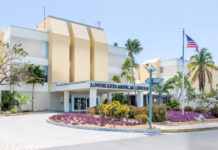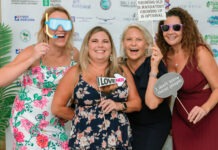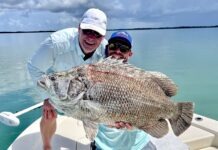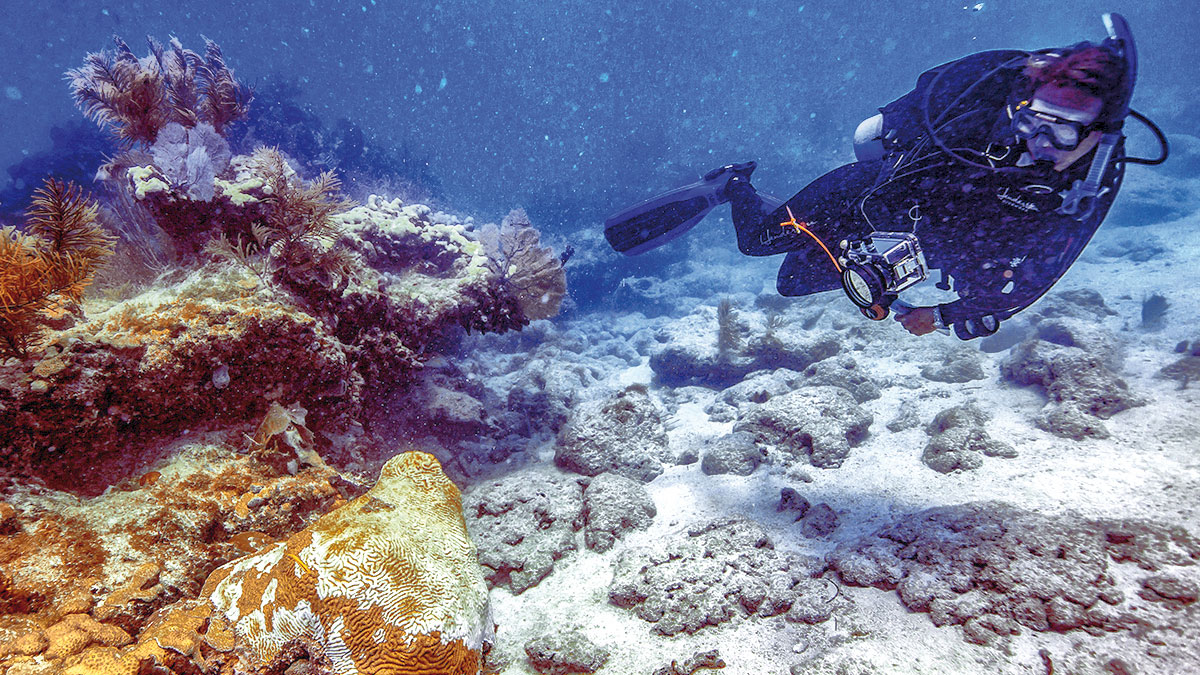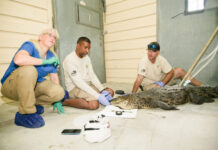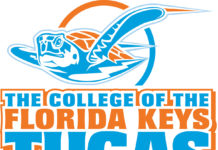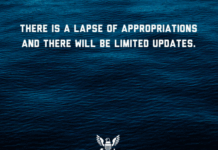It’s a common antibiotic for treating bronchitis and other bacterial infections in humans, and now scientists are experimenting with amoxicillin to see if it can treat stony coral tissue loss disease in the Keys.
The Board of County Commissioners heard an update at Wednesday’s meeting in Marathon about the coral disease that has been spreading through South Florida reefs for the last four years.
Its rapid progression and high rates of mortality among Florida Keys corals have been alarming for biologists, who say they’re doing everything they can to stop the disease from destroying entire colonies of stony corals.
John Hunt, program administrator for the Florida Fish and Wildlife Conservation Commission, told the BOCC that antibiotics are being tested on a small scale on infected corals.
“We’ve gotten approval to start using amoxicillin that we mix up in certain types of epoxies, and it delivers it to the coral, not to the water,” he said, adding the water and sediment are further tested to make sure the antibiotic has not spread to surrounding areas. “We’re trying to treat corals at the individual level, but not on a large scale yet.”
The process involves mixing the adhesive with the antibiotic in powder form and “mushing it onto the coral,” Hunt said. “It hardens on the outside and tends to release the antibiotic into the coral.”
Whether it will work as a cure for the infection is unknown, but it’s worth a try, Hunt said.
“We’ve lost the ability for corals to recover unless we take action,” he said.
The trials are happening in spots off of Marathon and the Lower Keys.
Back in late 2014, coral disease incidents were reported near Key Biscayne by staff of the state Department of Environmental Protection and area scientists. In a year’s time, nearly 55 linear miles of reef experienced widespread disease, according to the environmental agency. By 2016-17, the disease continued to spread as far north as Palm Beach County and south to Lower Matecumbe.
Traffic
Representatives from Aecom gave a presentation on traffic data in and out of the Keys. Using cellphone data from 2016-17, Jillian Scholler did a study on where Keys visitors come from and where they’re going and found:
- The use of a personal vehicle to get to the Keys went from 19 percent to 26 percent year over year among people traveling Keyswide.
- A majority of visitors to the Keys live in Florida.
- In the winter months, Marathon had a higher percentage of visitors than Key Largo, and in the summer months, Key Largo had a higher percentage of visitors than Marathon.
- From 2016 to 2017, about 30 percent of visitors in the Keys were from out of state, a majority from the Northeast in the wintertime, and from Georgia and Texas in the summertime.
